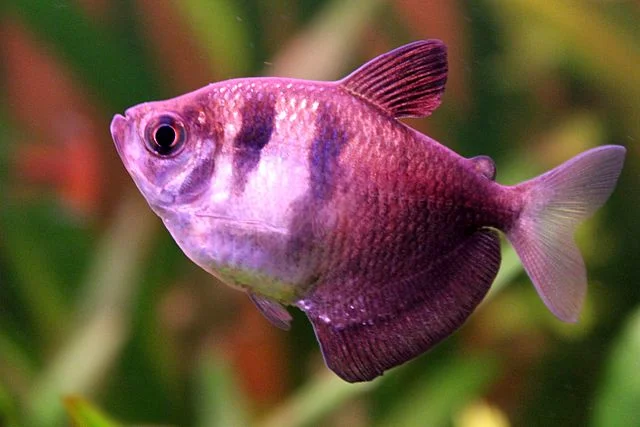by University of Stirling
Researchers have identified how mussel larvae move – giving mussel and other shellfish farmers important insights into where and how to grow them.
The University of Stirling’s Institute of Aquaculture used genetic testing of mussels at sample sites along Scotland’s west coast combined with mathematical modelling to understand where mussels grow well – and it’s all about the current.
PhD researcher Ana Corrochano-Fraile said: “Mussel growing has been a bit of a black box. The larvae float in the water, we put ropes at sea and larvae appear there. If the stock goes down, we don’t know why. If the quality goes down, we don’t know why.
“Our model shows us how the larvae move in the currents, from south to north. We found that, in 30 days, a cloud of larvae can move from the Scottish border near Stranraer up to Islay, for example. They then attach to substrate – anything solid in the water, which could be ropes – and grow for one and a half years until they start reproducing. The next generation of larvae is carried on the current from Islay to the Outer Hebrides in 30 days – that’s a lot further, because the current is faster there.
“For example, we found that 90 per cent of the mussels in Loch Roag on Lewis have come from Barra. Knowing where mussels come from and where they go tells us a lot about the best and worst locations for farms.”
The researchers worked with the Scottish Association of Marine Science, as well as mussel farms at different west coast locations, through the Fishmongers’ Company, Scottish Sea Farms Ltd and Association of Scottish Seafood Growers. They discovered, for example, that larvae from Loch Eil farm leave the loch, but no new larvae come in, so although Loch Eil has a self-sustaining population, it also contributes to populations at other locations, such as Loch Linnhe.
Ms Corrochano-Fraile’s supervisor, computational biologist Dr Michaël Bekaert, said: “We were surprised by how fast the larvae moved in a short amount of time, and also how fragile and vulnerable they are.
“The research shows that if we were to block the current in some way between Scotland and Northern Ireland, or slow it down, we would lose larvae. Similarly, if we were to pollute the sea there, or somewhere like Loch Linnhe, where many fresh larvae are washing in, that would have a huge impact. To breed quality mussels, like with anything else, you need maximum diversity in the genes, so you don’t want to lose fresh genes by messing with the current or polluting.
Stay Always Informed
Join our communities to instantly receive the most important news, reports, and analysis from the aquaculture industry.
“We will need to understand the effects of climate change better, but if the current were to move much faster, for example, the larvae might be swept past the Outer Hebrides without stopping at all!”
Forty per cent of the UK’s mussels are produced in Scotland, with half of these growing along the west coast and the rest around Shetland. Mussel farming has a low impact on the environment, as they require no food, grow on ropes and, by nature of being bivalves, they even clean the water around them.
“This does mean they are vulnerable to pollution though,” explained Dr Bekaert. “They will absorb heavy metals, for example. If we give them rubbish to eat, they keep it. But if these fast-flowing waters are clean, the mussels are clean.
“It is possible to produce a lot of mussels at very low cost – environmental and economic. The most expensive part is harvesting and processing them.”
Increasing mussel production is part of industry organisation Scotland Food and Drink’s ambition to double Scotland’s food production by 2030.
Dr Bekaert said: “This level of detailed oceanographic information is also relevant to other valuable bivalves such as scallops and oysters and, being at a scale of metres rather than kilometres, is even useful for the salmon industry.”
Reference (open access)
Corrochano-Fraile Ana, Adams Thomas P., Aleynik Dmitry, Bekaert Michaël, Carboni Stefano, 2022. Predictive biophysical models of bivalve larvae dispersal in Scotland. Front. Mar. Sci., 12 September 2022, Sec. Physical Oceanography https://doi.org/10.3389/fmars.2022.985748
Editor at the digital magazine AquaHoy. He holds a degree in Aquaculture Biology from the National University of Santa (UNS) and a Master’s degree in Science and Innovation Management from the Polytechnic University of Valencia, with postgraduate diplomas in Business Innovation and Innovation Management. He possesses extensive experience in the aquaculture and fisheries sector, having led the Fisheries Innovation Unit of the National Program for Innovation in Fisheries and Aquaculture (PNIPA). He has served as a senior consultant in technology watch, an innovation project formulator and advisor, and a lecturer at UNS. He is a member of the Peruvian College of Biologists and was recognized by the World Aquaculture Society (WAS) in 2016 for his contribution to aquaculture.




